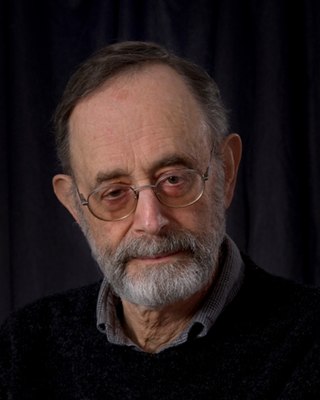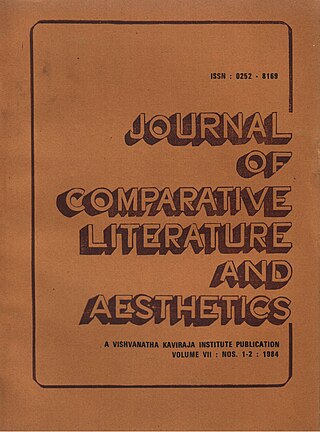Somaesthetics is an interdisciplinary field of inquiry aimed at promoting and integrating the theoretical, empirical and practical disciplines related to bodily perception, performance and presentation.
Contents
| Part of a series on |
| Philosophy |
|---|
| |
Somaesthetics is an interdisciplinary field of inquiry aimed at promoting and integrating the theoretical, empirical and practical disciplines related to bodily perception, performance and presentation.
| Part of a series on |
| Philosophy |
|---|
| |
The term ‘somaesthetics’ was coined by the American pragmatist philosopher Richard Shusterman in 1996 through the compounding of “soma”, an expression derived from the Greek word for body, and “aesthetics”, a word derived from the Greek aesthesis, meaning ‘sensory perception’. [1] Shusterman has reported in a number of his works that he chose ‘soma’ over more familiar terms “to avoid problematic associations of body (which can be a lifeless, mindless thing) and flesh (which designates only the fleshly parts of the body and is strongly associated with Christian notions of sin)” and to emphasize that the project “concerns the lived, sentient, purposive body rather than merely a physical body”. [2] As an amalgamation, ‘somaesthetics’ “implies a project of appreciating and cultivating the body not only as an object that externally displays beauty, sublimity, grace, and other aesthetic qualities, but also as a subjectivity that perceives these qualities and that experiences attendant aesthetic pleasures somatically”. [2]
Somaesthetics as a research project initially arose from the work of Richard Shusterman during the mid-1990s in response to what he perceived as needed developments within his two principal modes of inquiry: pragmatist aesthetics and philosophy as an embodied art of living. While pragmatist aesthetics, according to Shusterman, advocates for more active and creative engagement than traditional aesthetics, he believed it should also recognize that artistic, practical and political action requires humanity’s primary tool, the body, and that such action could be improved partly by improving this instrument. [3] In the same way, the philosophical life could be improved through greater mastery of the soma -- our medium of living. He moreover lamented the reduction of aesthetics (as well as philosophy itself) from “a noble art of living into a minor, specialized university discipline” narrowly concerned with beauty and fine art. [4] Shusterman thus argued for the revival of “Baumgarten’s idea of aesthetics as a life-improving cognitive discipline that extends far beyond questions of beauty and fine arts and that involves both theory and practical exercise” and for an end to “the neglect of the body that Baumgarten disastrously introduced into aesthetics”. [5] As proposed, Shusterman’s project of somaesthetics would restore “the soma — the living, sentient, purposive body — as the indispensable medium for all perception". [3] Such heightening of somatic consciousness would not only enhance artistic appreciation and creation, but increase the perceptual awareness of meanings and feelings that have the potential to elevate everyday experience into an art of living.
Shusterman proposed three fundamental dimensions of his emerging field:
• Analytic somaesthetics, as the most theoretically-oriented of the three, “describes the basic nature of bodily perceptions and practices and also of their function in our knowledge and construction of reality”. [6]
• Pragmatic somaesthetics presupposes the analytic dimension and “has a distinctly normative, prescriptive character – by proposing specific methods of somatic improvement and engaging in their comparative critique”. [7]
• Practical somaesthetics focuses on practicing somatic care “through intelligently disciplined body work aimed at somatic self-improvement (whether in a representational, experiential, or performative mode)". [8]
Over the past two decades, somaesthetics has become a truly interdisciplinary endeavor. Originally conceived by Shusterman as being under the umbrella of philosophy, or perhaps even a branch of aesthetics, somaesthetics has evolved into an “open field for collaborative, interdisciplinary, and transcultural inquiry” with applications “ranging from the arts, product design, and politics to fashion, health, sports, martial arts, and the use of hallucinogenic drugs in education”. [9]
• Heyes, Cressida J. Self transformations: Foucault, Ethics, and Normalized Bodies. Oxford; New York: Oxford University Press, 2007.
• Höök, Kristina, Anna Ståhl, Martin Jonsson, Johanna Mercurio, Anna Karlsson, and Eva-Carin Banka Johnson. “Somaesthetic Design.” Interactions 22.4 (2015): 26-33.
• Jay, Martin. “Somaesthetics and Democracy: Dewey and Contemporary Body Art,” in Martin Jay, Refractions of Violence (New York: Routledge, 2003).
• Jolles, Marjorie. “Between Embodied Subjects and Objects: Narrative Somaesthetics.” Hypatia 27:2 (2012): 301–318.
• Mullis, Eric C. “Performative Somaesthetics: Principles and Scope.” Journal of Aesthetic Education, 40.4 (2006): 104-117.
• Shusterman, Richard. Body Consciousness: A Philosophy of Mindfulness and Somaesthetics. Cambridge: Cambridge University Press, 2008.
• Shusterman, Richard. Thinking through the Body: Essays in Somaesthetics. Cambridge: Cambridge University Press, 2012.
• Tedesco, Salvatore. “Somaesthetics as a Discipline Between Pragmatist Philosophy and Philosophical Anthropology.” Pragmatism Today: The Journal of the Central-European Pragmatist Forum 3.2 (Winter 2012): 6-12.
• Terry-Fritsch, Allie. “Performing the Renaissance Body and Mind: Somaesthetic Style and Devotional Practice at the Sacro Monte di Varallo.” Open Arts Journal 4 (2015): 111-132.
• Turner, Bryan. “Somaesthetics and the Critique of Cartesian Dualism.” Body & Society 14.3 (2008): 129-133.
Aesthetics is the branch of philosophy concerned with the nature of beauty and the nature of taste and, in a broad sense, incorporates the philosophy of art. Aesthetics examines the philosophy of aesthetic value, which is determined by critical judgments of artistic taste; thus, the function of aesthetics is the "critical reflection on art, culture and nature".

Interdisciplinarity or interdisciplinary studies involves the combination of multiple academic disciplines into one activity. It draws knowledge from several fields like sociology, anthropology, psychology, economics, etc. It is related to an interdiscipline or an interdisciplinary field, which is an organizational unit that crosses traditional boundaries between academic disciplines or schools of thought, as new needs and professions emerge. Large engineering teams are usually interdisciplinary, as a power station or mobile phone or other project requires the melding of several specialties. However, the term "interdisciplinary" is sometimes confined to academic settings.

In aesthetics, the sublime is the quality of greatness, whether physical, moral, intellectual, metaphysical, aesthetic, spiritual, or artistic. The term especially refers to a greatness beyond all possibility of calculation, measurement, or imitation.
This is an alphabetical index of articles about aesthetics.
Richard Shusterman is an American pragmatist philosopher. Known for his contributions to philosophical aesthetics and the emerging field of somaesthetics, currently he is the Dorothy F. Schmidt Eminent Scholar in the Humanities and Professor of Philosophy at Florida Atlantic University.
Art as Experience (1934) is John Dewey's major writing on aesthetics, originally delivered as the first William James Lecture at Harvard (1932). Dewey's aesthetics have been found useful in a number of disciplines, including new media.
Encyclopedia of Aesthetics, published in 1998 by Oxford University Press, is an encyclopedia that covers philosophical, historical, sociological, and biographical aspects of Art and Aesthetics worldwide. The second edition (2014) is now available online as part of Oxford Art Online.
Applied aesthetics is the application of the branch of philosophy of aesthetics to cultural constructs. In a variety of fields, artifacts are created that have both practical functionality and aesthetic affectation. In some cases, aesthetics is primary, and in others, functionality is primary. At best, the two needs are synergistic, in which "beauty" makes an artifact work better, or in which more functional artifacts are appreciated as aesthetically pleasing. This achievement of form and function, of art and science, of beauty and usefulness, is the primary goal of design, in all of its domains.
Elisabeth Schellekens is a Swedish philosopher and Chair Professor of Aesthetics at Uppsala University. Previously, she was Senior Lecturer at Durham University (2006-2014). Schellekens is known for her works in aesthetics. Her research interests include aesthetic cognitivism and objectivism, aesthetic normativity, Hume, Kant, aesthetic and moral properties, conceptual art, non-perceptual or intelligible aesthetic value, the relations between perception and knowledge, the aesthetics and ethics of cultural heritage, and the interaction between aesthetic, moral, cognitive and historical value in art.
The following outline is provided as an overview of and topical guide to aesthetics:
Yuriko Saito is a retired Japanese-American philosopher specializing in aesthetics, including wabi-sabi, the Japanese philosophy of appreciating transience and imperfection. She is a professor emeritus of philosophy at the Rhode Island School of Design (RISD).

Arnold Berleant is an American scholar and author who is active in both philosophy and music.
Somatic theory is a theory of human social behavior based on the somatic marker hypothesis of António Damásio. The theory proposes a mechanism by which emotional processes can guide behavior: in particular, decision-making, the attachment theory of John Bowlby, and the self-psychology of Heinz Kohut.

Aesthetics of nature is a sub-field of philosophical ethics, and refers to the study of natural objects from their aesthetical perspective.
Everyday Aesthetics is a recent subfield of philosophical aesthetics focusing on everyday events, settings and activities in which the faculty of sensibility is saliently at stake. Alexander Baumgarten established Aesthetics as a discipline and defined it as scientia cognitionis sensitivae, the science of sensory knowledge, in his foundational work Aesthetica (1750). This field has been dedicated since then to the clarification of fine arts, beauty and taste only marginally referring to the aesthetics in design, crafts, urban environments and social practice until the emergence of everyday aesthetics during the ‘90s. As other subfields like environmental aesthetics or the aesthetics of nature, everyday aesthetics also attempts to countervail aesthetics' almost exclusive focus on the philosophy of art.
Philosophy of architecture is a branch of philosophy of art, dealing with the aesthetic value of architecture, its semantics and relations with the development of culture.
Feminist aesthetics first emerged in the 1970s and refers not to a particular aesthetic or style but to perspectives that question assumptions in art and aesthetics concerning gender-role stereotypes, or gender. Feminist aesthetics has a relationship to philosophy.
Social practice or socially engaged practice in the arts focuses on community engagement through a range of art media, human interaction and social discourse. While the term social practice has been used in the social sciences to refer to a fundamental property of human interaction, it has also been used to describe community-based arts practices such as relational aesthetics, new genre public art, socially engaged art, dialogical art, participatory art, and ecosocial immersionism.
Thomas Louis Hanna was a philosophy professor and movement theorist who coined the term somatics in 1976. He called his work Hanna Somatic Education. He proposed that most negative health effects are due to what he called Sensory Motor Amnesia. He claimed that many common age-related ailments are not simply a matter of time but the result of poor movement habits.

The Journal of Comparative Literature and Aesthetics is a quarterly peer-reviewed journal published from India in the field of literature, philosophy, religion, and art history. The journal, published by Vishvanatha Kaviraja Institute of Comparative Literature and Aesthetics since 1977 as its official organ, addresses interdisciplinary and cross-cultural issues in literary understanding and interpretation, aesthetic theories, conceptual analysis of art, literature, philosophy, religion, mythology, history of ideas, literary theory, history, and criticism. It publishes essays and book reviews ranging across the literary and philosophical traditions of the East and the West. The institute, which publishes the journal and also academic books, was founded on 22 August 1977 coinciding with the birth centenary of legendary philosopher, aesthetician, and historian of Indian art, Ananda K. Coomaraswamy (1877-1947). Both the Institute and the journal were founded by Late Ananta Charan Sukla (1942-2020), a former professor of English and Comparative Literature at Sambalpur University, India. It is the oldest journal of India in the field of literature and philosophy which is still active, sans any institutional support.